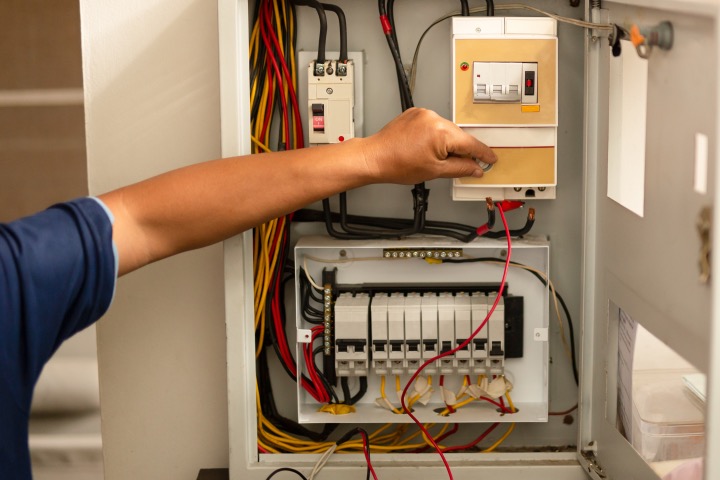Table of Contents
You plug in the microwave, turn the switch on, and the power goes off. With no clue about what just happened, you call an electrician to fix the problem. And later you realize that you could do it yourself if you knew the basics of your home’s electrical service panel.
Knowing how to fix minor electrical issues can save you some money, but most importantly, your skills can come in handy in case of an emergency. So, here’s a detailed article explaining everything you should know about an electrical service panel.
What is an Electrical Service Panel?
An electrical service panel is the link between the external wires coming from the street and the internal electrical wires of the home’s electrical system. It is the central distribution point that connects the service wire to the exit wires.
Where to Find the Electrical Service Panel?
The home electrical panel is generally kept away from the main household activities. These locations may include the garage, hallway leading to the garage, basement, and closet.
You can find your electrical service panel by locating the service drop and service head on your roof. Usually, the service panel should be directly below, in one of the home’s stories. If the power lines are buried, the line will usually start on the street and connect to the home from the front or side of the house.
Types of Electrical Panels
-
Main Breaker Panel
The main breaker panel controls the electricity that reaches the different rooms of your house. It can be used to cut the power to your house including the circuit breaker. They are classified based on the number of circuits they can handle and their amperage.
-
Fuse Boxes
These are designed to prevent circuit overload. Fuse boxes consist of small fuses that can fit into an electrical panel. The fuse will short out when there is an excess flow of current.
-
Main Lug Panel
Main lug panels use lugs and the line wires run into these lugs. They feature the main breaker as the separate disconnect at the meter. You can connect the main lug panel to the breaker at the main panel where the main lug panel operates as a sub-panel.
-
Sub Panel
These are perfect for homes where you require multiple circuits in the same area. The sub-panels get their power from the main panel through a circuit. They don’t have dedicated disconnects and they allow you to adjust the current distribution throughout the house.
-
Transfer Switches
These are suited for circuits where a backup power generator is used. It works by transferring the generator power to the electrical power through the panel. There are two types of transfer switches – manual and automatic.
Electrical Service Panel Safety Considerations
- Under normal conditions, it is safe to touch the service panel when the panel’s outer door is closed.
- Never work on an open electrical service panel when the door and protective front cover are removed. If you get a shock from the service lug, it will most definitely be a fatal one. Avoid touching the wires that enter the panel from the top of the box.
- It would be a mistake to think that shutting off the panel’s main circuit breaker switch and removing the protective cover will keep you safe. The main breaker cuts off the power going to the home branch’s circuits. However, it doesn’t shut off the power coming into the panel on the utility service lines.
- Apart from being cautious of what areas of the service panel your hands touch, be careful with handling tools as well. Tools can potentially touch the service wires and transmit a shock to you.
How Often to Inspect an Electrical Service Panel?
Get the electrical panel and circuit breaker box inspected once a year to ensure that the safeguards are working properly. This will ensure that the breakers are keeping you safe.
You need to inspect for loose connections, heating within the panel or signs of aging. Identify signs that can lead to a possible electrical fire. Call a professional to get the electrical panel checked out.
Never compromise on electrical safety. Call a qualified electrician if you want to get any work done.






